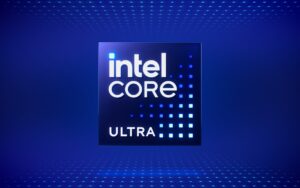
Have you ever stopped to think about where you keep all your digital data these days? A photo, an important document, or even a movie collection needs a secure, accessible location — whether in the cloud or on a physical device.
But what many people don’t use is NAS, also known as network-attached storage, a smart solution that acts as storage as if it were your own server.
Below, we’ll explore what NAS systems are, how they work, and why they can meet your storage needs, whether you’re a technology enthusiast or someone looking to simplify data management at home or in the office.

What is NAS?
NAS, or Network-Attached Storage, is like a specialized mini-computer, equipped with its own motherboard, processor, amount of memory and operating system, designed specifically for data storage and management.
The heart of a NAS is its optimized operating system, which manages not only the hard drives and SSDs, but also the interactions between devices connected to the network.
Unlike a cloud service system or even external storage that connects directly to your computer, a NAS is connected to your home or office network via an Ethernet network cable.
This allows multiple users and devices to access and store data simultaneously, without the need to plug it directly into a computer, for example.
Read more:
To facilitate access and security, the NAS uses network protocols such as NFS (Network File System) or SMB/CIFS (Server Message Block/Common Internet File System), which are common languages for devices on the network to understand how to access files.
Therefore, imagine a NAS as a centralized library where you can store and check out books (files), and where new books can be added or old ones consulted by anyone with a library card (network access), without the need to go even on someone’s bookshelf.
Evolution of NAS throughout history
The NAS concept has a solid foundation linked to the evolution of computing and did not emerge recently. Decades ago, in 1980, researchers at the University of Newcastle in Australia began investigating methods for sharing files faster between computers. The first NAS system was created to meet this need.
NFS (Network File System), developed by Sun Microsystems in 1984, marked a major change. NFS allowed multiple computers to access files over a network as easily as if they were stored locally.


This invention made file sharing in educational institutions and companies easier, as well as paving the way for contemporary NAS systems.
NAS then evolved from a file sharing service to a reliable storage service with backup, data security, and network management capabilities.
3COM and other companies, for example, have begun to incorporate these solutions into products aimed at both home users and large enterprises, increasing the reach and functionality of NAS systems.
Advantages and Disadvantages of NAS
Investing in a NAS system can offer many benefits, but there are also important considerations to make before deciding whether it’s the right solution for you or your business. Let’s explore the pros and cons to provide a balanced view.
Benefits
- Centralized and convenient access: With a NAS, your data is accessible from any device connected to the network, making collaboration and file sharing between users easier.
- Low maintenance cost: Once set up, NAS requires little maintenance, and the cost to expand storage is generally less than purchasing cloud storage services over the long term.
- Enhanced Security: By keeping data on a local network, NAS offers greater security against external attacks compared to internet-based storage solutions. Additionally, features like RAID provide redundancy, protecting against data loss.
- Consistent Performance: Because the NAS operates on your local network, it is not affected by fluctuations in internet speed, ensuring fast and consistent access to data.
- Flexibility: NAS systems are highly configurable in terms of storage capacity, access protocols and integrated services such as media servers or automatic backup.
Disadvantages
- Initial cost: Although the maintenance cost is low, the initial investment for a NAS system can be significant, especially for models with high capacity or advanced features.
- Configuration Complexity: For less technical users, setting up and managing a NAS can be challenging without proper assistance.
- Local Network Dependency: If the local network fails, access to data stored on the NAS will be interrupted, which can be problematic for businesses that require continuous access to data.
- Remote Access Limitations: While many NAS systems offer remote access, configuring and maintaining these services securely can be complicated and susceptible to security vulnerabilities.
Read too:
How does it work in practice?
Configuring a NAS can be divided into clear and manageable steps, making the process accessible even for those who are not technology experts.
Step 1: Physical Connection
- Positioning: Choose a safe, ventilated location for your NAS, preferably close to your router or switch.
- Network connection: Connect the NAS to your network using an Ethernet cable. This typically involves plugging one end of the cable into the NAS’s Ethernet port and the other end into a free port on your router or switch.
- Food: connect the NAS to power and turn it on.
Step 2: Software Installation
- Configuration Software: download and install the configuration software provided by the NAS manufacturer. This software can usually be found on the manufacturer’s website or on a CD that comes with the device.
- Initial access: Use the software to detect the NAS on your network and begin initial configuration. This may include setting an administration password and choosing basic network settings.
Step 3: Storage Configuration
- Volume creation: Define how the storage space will be divided. Volumes can be configured for different purposes, such as storing backups, multimedia files, or work documents.
- RAID: Decide whether you will use a RAID configuration. If so, select the RAID type that suits your redundancy and performance needs.
Step 4: Access Configuration
- Users and groups: create user accounts for anyone who will need to access the NAS. Assign specific permissions to each user or group, controlling what each user can see or modify.
- Network Protocols: Enable and configure protocols such as SMB/CIFS or NFS, depending on the predominant operating system on your network (Windows for SMB/CIFS, Linux/Unix for NFS).
Step 5: Additional Services
- Media Server: Configure the NAS to act as a media server, allowing devices such as smart TVs and gaming consoles to access stored multimedia content.
- Automatic backup: establish automatic backup routines for computers and mobile devices connected to your network.
Step 6: Monitoring and maintenance
- Regular checks: Monitor the status of the NAS through the configuration software to ensure everything is working correctly.
- Software Updates: Keep your NAS operating system and firmware up to date to ensure security and efficiency.
NAS vs. cloud storage
To decide between NAS and cloud storage, consider your specific access, security, cost, and maintenance needs. NAS is ideal for those who need fast, controlled and secure access to data within a local network.
Cloud storage is more suitable for those who need maximum flexibility and access from anywhere in the world.
Conclusion
For both home users and businesses, NAS offers a robust and reliable solution for data management. It is a strategic choice for many because it allows you to fully control how data is stored, accessed, and protected.
But the decision to use a NAS should be made after careful assessment of specific features and needs. By considering these elements, you can maximize the benefits of a NAS system.
Are you eager to discover how a NAS can improve your data management environment? Look at the options available and think about how this technology can help you do everyday things.
Source: https://www.adrenaline.com.br/hardware/o-que-e-nas/


